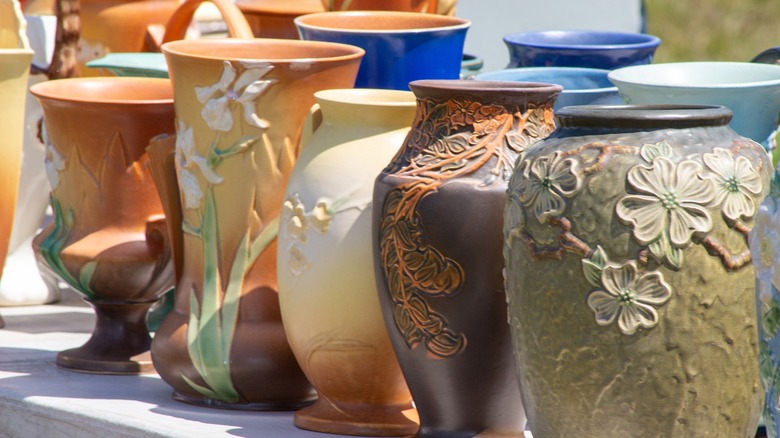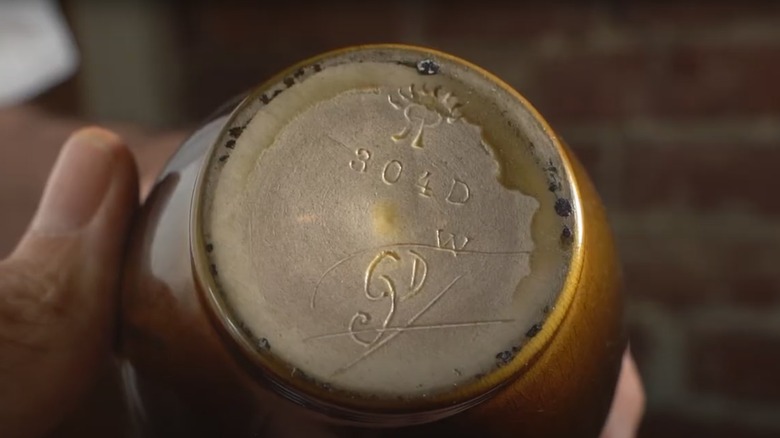A Decorative Household Item You Can Buy At A Thrift Store Is Worth $1,000 Or More
When browsing the home wares at your local thrift store, it's worth it to examine the ceramics; you can make some serious money by reselling Rookwood Pottery. You might find a 1913 bowl from Goodwill priced at $2.99 or a 1923 vase for $6.99, which seems quite cheap, but the money comes later. For example, the auction and appraisal firm Freeman's|Hindman sold a Rookwood lot for $6,300 in March 2023. Another auction site, Rago sold a scenic vellum plaque by Sallie Coyne for $12,600 in February 2023, and Bonhams Skinner sold an 1883 vase with bats and frogs for $2,048 in February 2025. At some thrift stores like Goodwill's Cincinnati Outlet, what you pay for hard goods like a vase depends on how much it weighs. A Goodwill spokesperson told Spectrum News in January 2024 that they've seen Rookwood vases worth $1,000 sell there for as low as $1.79. And vases aren't the only vintage household item you can sell for a ton of money; thrift stores also frequently underprice vintage christmas displays and old cookbooks that might be worth a lot.
The reason a $2 vase can resell for four figures is that Rookwood has history. The company began in Cincinnati in the 1880s with Maria Longworth Nichols Storer, the founder. This made it the first major ceramics company in the United States that was run by a woman. The glazes by Rookwood are well known; in 1904 it introduced the Vellum glaze that gave it a soft, painted look that collectors and museums still value. Rookwood won a Gold Medal at the 1889 Paris Exposition, and the Grand Prize at the Exposition Universelle in Paris in 1900. At the 1904 Louisiana Purchase Exposition in St. Louis, it got two Grand Prizes.
How to identify authentic Rookwood pottery
If you want to know a real Rookwood Pottery, look at the base for the reversed RP mark. If it is surrounded by flames, count them to find the year. This is a method that applies to pieces made between 1887 and 1900. For example, if the base has seven flames, it was made in 1893, since one flame was added each year starting from 1886. If it has fourteen flames and the Roman numeral "I", it is from 1901, which was the first year Rookwood used Roman numerals to show the date.
Also read the information under the date indicator. You should see arabic numerals that refer to the item's shape code. These are often by a single letter from A through F, which tells you the item's scale; A is the largest and F is the smallest. The bottom of some Rookwood Pottery also carries process or glaze codes that can tell you if what you are holding is authentic. Some pieces include single letters that note the type of glaze, like V for Vellum or W for Iris.
Finally, look for the initials of the artist nearby. For example, A.R.V. stands for Albert R. Valentien, a well-known decorator whose works appear in museum collections and at auctions. If you see initials on a piece, you can check them using the "Markings" page on the Rookwood Database.

